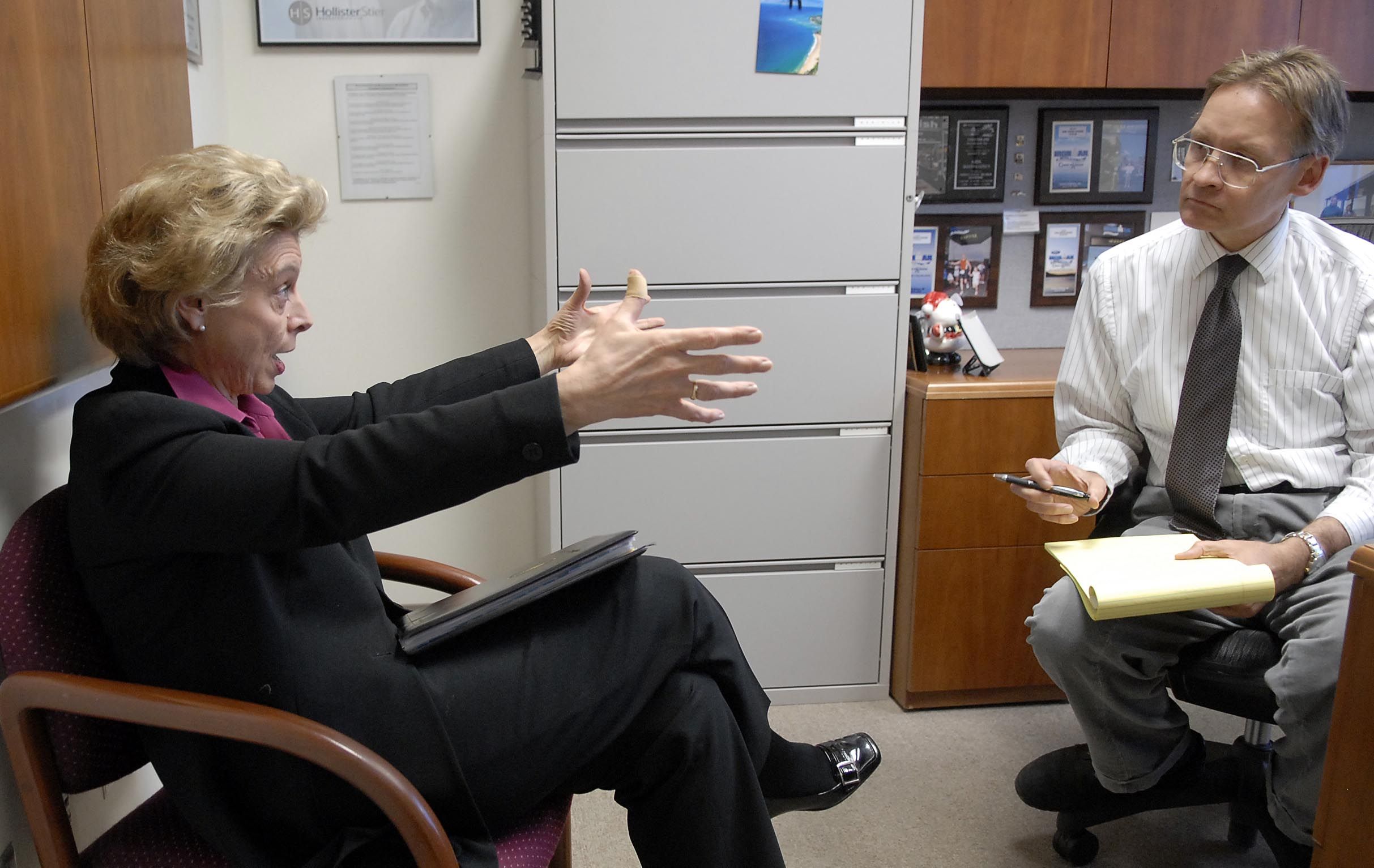Sunday Spin: Helping to understand Hanford
Jane Hedges of the state Department of Ecology explained the intricacies of nuclear waste tanks at the Hanford Nuclear Reservation, doing her best to calm the uproar over recent news that six of the supposedly stable tanks are, in fact, leaking.
Trying to explain most things at
To read the rest of this item, or to comment, go inside the blog.
. . .once you get past the standard line that there’s tons of really bad stuff down there from all those nukes we made for the Cold War but, thankfully, haven’t had to use. So Hedges brought it down to a level that even legislators and reporters could understand.
First of all, the tanks are big. The largest are the size of a basketball court with a 75-foot wall around it. Inside the tanks are a “stew of different materials” that form a radioactive sludge, from which the liquid was supposed to have been pumped out years ago.
The sludge is about the consistency of peanut butter, Hedges said, but sometimes the interstitial liquid raises to the top. The what? Think organic peanut butter, she said. When it sits too long, it gets that oil layer on the top.
Of the 177 tanks, 149 only have a single wall, or shell, and 67 of those were “suspected leakers”, but the rest were thought to be secure. Thought to be is a relative term, because in a container that big, a drop of even a fraction of an inch can represent many gallons of waste. You can’t just drop a giant dipstick into the tank.
As Hedges explained, there’s no easy way to get an extremely accurate measurement because lowering cameras or instruments into the tanks isn’t practical. The stuff inside melts the instruments, and eats rubber and plastic. The methods they do have showed some minor fluctuations that could have been anomalies until further testing showed that six supposedly secure tanks are leaking as much as 1,000 gallons of radioactive liquid a year.
Getting the liquid out of the tanks is a problem. First, there’s no good place to put it right now, because the more secure double-shelled tanks are also pretty full. Second, there’s the danger of triggering evaporation of the liquid, which would cause a tank to heat up and create a deflagration.
“In our common words, a ‘Boom,’” Hedges said.
As chairman of the Senate Energy Committee, Sen. Doug Ericksen, R-Ferndale, got to ask the question that most people’s minds were forming: Is there a safety threat?
“There is no threat to anyone at this time,” Hedges said. The leaking tanks are between 200 and 300 feet above groundwater, at least five miles from the
Long-term, though, the state needs the feds to get the radioactive waste into a more permanent solution, she said.
